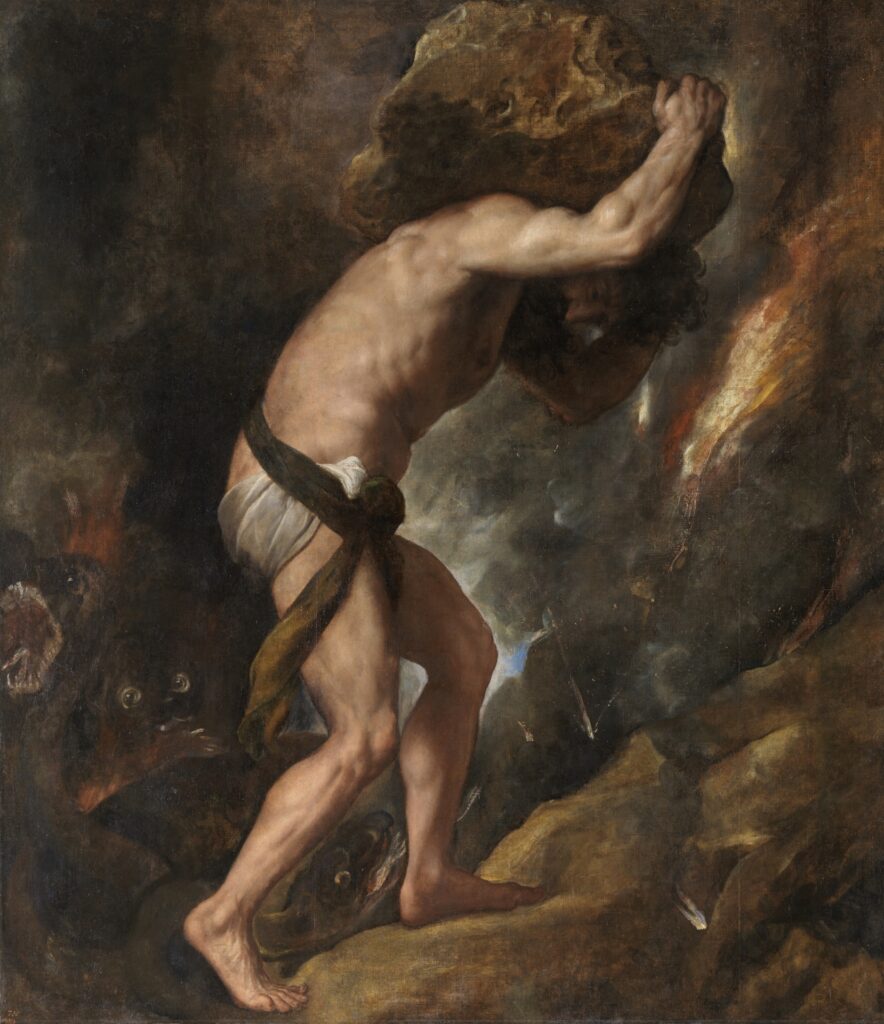Thought’s minimal gesture amounts to establishing distinctions against the background of a night in which, otherwise, all cows would be black (and not even discernible from their own shadows): a primordial chaos or, what amounts to the same, the undifferentiated unity of all things in which nothing is yet outlined. (Example of basic distinctions: everything can be eaten except this = food taboo, or all relations are permitted except this = incest taboo).
But what, in turn, is thought’s maximal gesture? That by which thought contemplates itself, be it abstractly (is not this philosophy’s goal) or (which proves not less thoughtful and thought-provoking) in sensible terms.
Let us take Rubens’s The Judgement of Paris (Madrid, Prado Museum) as an example of the latter modality.

It is a painting with two centres. Athena is its geometrical centre. Aphrodite, its narrative centre. Plus, each centre is the end of an ellipse, one of which outlines the movement of the goddesses and the other that of the offering of the apple by Hermes. Two intersecting ellipses, then, or rather, two ellipses in oscillation. And what better way could there be to make visible the hesitation of a decision, the oscillating character of every decision: this or that?
Choice, then, as a movement of thought (or, once more, of the spirit). This is what Rubens gives us to contemplate, in the same way that Titian’s Sisyphus (Madrid, Prado Museum) gives us to contemplate the difference between what happens for the first time, even though it may have happened before (hence the renewed effort of the body – now!) and what, by dint of repeating itself, will never happen for the first or even perhaps the last time (hence the gravity of the soul, which is reflected in the face); a difference which, by means of a small masterly brushstroke (a little touch of blue), Titian splits into another: that which mediates between the inside (the domain of repetition) and the outside (the lieu of difference).

